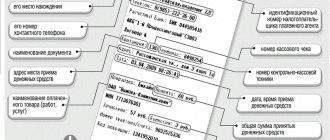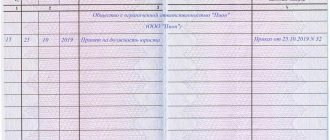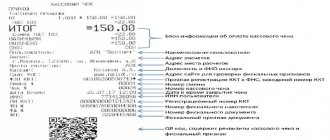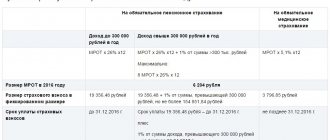Payment online
On the website of the Federal Bailiff Service (FSSP) there is a database of enforcement proceedings, with which you can find out about the existence of a debt and pay it immediately.
To do this, just indicate your region, full name and date of birth. If there is a debt, the system will find and provide all the necessary data and offer to pay. In the “Service” column, the debtor can choose one of six payment options:
- through the payment system “Oplatagosuslug.ru” (payment by bank card or from a mobile phone account);
- through the service for paying debts under enforcement proceedings of the Leader payment system and Promsvyazbank (payment by bank card);
- through the Robokassa service (payment by credit card, there is a limit on the maximum payment amount - 15 thousand rubles per day);
- via Qiwi Wallet (amount limit – 15 thousand rubles);
- via WebMoney;
- through Yandex.Money (payment system, including allowing you to pay debts through mobile phone stores, amount limit is 15 thousand rubles).
For transfers to bailiffs you will have to pay a commission of 2.3-2.5%, everyone except Qiwi - the system will do it for free.
For Sberbank cardholders, there is another method of online payment without commission - through a personal account on the bank’s website. They just need to select in the “Transfers and Payments/Payments for Purchases and .
What are the features of a payment order to bailiffs of the 2020–2021 model?
Let's start with the fact that the procedure for filling out payments to the bailiffs will be different for tax deductions and for non-tax payments of the employee (for example, alimony, judicial penalties).
There are no special rules regarding non-budgetary collections, as well as official instructions on the procedure for processing payments. Therefore, we believe that a regular payment order is issued for them, without filling out the “tax” fields, including payer status, BCC, etc. In this case, all information identifying the payment is provided in the “Purpose of payment” field.
So, it indicates the type of deduction (for example, alimony for such and such a period), details of the writ of execution, alimony case, you can provide information about the recipient of the amount withheld from the employee. The specific composition of the information can be clarified with the bailiffs.
For more information about the details indicated in the payment document, read the material “Basic details of a payment order” .
If, according to a writ of execution, you transfer an employee’s personal taxes to the account of the FSSP department, the payment order is issued according to the rules provided for payments to the budget.
The features of such a payment are as follows.
- Payer's TIN (field 60). The TIN of the individual whose tax obligation is being fulfilled is indicated. If he does not have a TIN, 0 is entered.
- Payer checkpoint (field 102). Set to 0.
- Payer's name (field 8). The short name of the organization that transfers the withheld amounts to the budget, i.e. yours, is given.
- Payer status (field 101). For these payments, Appendix 5 to the order of the Ministry of Finance of Russia dated November 12, 2013 No. 107n provides the status “19”.
Read about other possible payer statuses here.
- Code (field 22). If there is a unique accrual identifier, it is provided (20 or 25 characters). If there is no UIN, 0 is entered.
- KBK (field 104). Here they put 0, since BCCs are not provided for such transfers.
For information about the cases in which it is necessary to indicate the KBK in the payment order when transferring funds to bailiffs, read the Ready-made solution from ConsultantPlus. Get trial online access to the system for free.
- OKTMO is brought to the location of the bailiff service.
- Document number (field 108). For payer status with code 19, field 108 requires the identification of information about the individual. Such an identifier can be SNILS, series and number of a passport or driver’s license, series and number of a car registration certificate, etc. Before the identifier in field 108, enter its 2-digit code. For example:
- 01 — passport of a Russian citizen;
- 04 - military personnel identification card;
- 14 — SNILS;
- 22 - driver's license;
- 24 - vehicle registration certificate.
This cipher is separated from the identifier by a semicolon. The signs “No” and “–” are not indicated in field 108. If the individual’s TIN is filled in, the value 0 is allowed in this field.
- In fields 106 “Base of document”, 107 “Tax period” and 109 “Date of document” enter 0.
Payment via terminal
In many territorial departments of bailiffs, terminals and ATMs for instant debt payment are installed. To use them, you need to know the number of the enforcement proceedings (you can check it in the database of enforcement proceedings).
By the way, you can also pay your debt in Qiwi terminals, following a simple algorithm.
Another possible location for terminals is airports. On the one hand, their presence there is logical - for the convenience of those who only learned before departure about the restriction of the right to travel abroad. But the process of data exchange between the bank, bailiffs and border service takes up to ten days. Therefore, paying on the spot is pointless - the person will not be able to fly anyway. True, the country's chief bailiff, Artur Parfenchikov, promises that in the near future the period for lifting this restrictive measure will be reduced to several hours (to a maximum of one day).
Where do you need to get payment details for bailiffs?
Late payment is a common problem for those who have taken out a loan.
It seemed to the man that he would be able to find money and pay off the debt on time, but unforeseen circumstances occurred, which resulted in financial troubles. If a Russian citizen has not closed the debt obligation within the required period, then they have the right to send the case to a bailiff within seventy days from the beginning of the delay. Bailiffs have the right to carry out enforcement procedures. The situation should not come to this, because in this case you can lose your property (even real estate). It is much easier to pay the mortgage to the bailiffs using the popular Sberbank Online service. Some Russians, thinking about how to pay a court debt, are faced with ignorance of the details of the organization to which the payment is sent. In fact, finding the data is quite easy. To do this you can:
- visit the main branch of the FSSP organization if you live in a big city;
- See the necessary information yourself on the department’s website.
The second method is, of course, much faster. You need to log in to the site and enter your region information. After this, the system will provide the necessary details.
In this case, registration on the portal is optional.
A lien can arise even if a person appears to be making regular payments on the debt. It is recommended to register in the bailiff system, when theoretically there may be delays for a particular payment, and periodically check your information in the database.
READ Disabling the service of topping up your phone balance from a Sberbank card
Those who use loans, pay alimony, and often pay taxes and fines must register in the system themselves and find out from time to time whether they have any debt. This will allow you to pay bailiffs on time.
Payment to bailiffs is a mandatory procedure when there are grounds for it. Otherwise, bailiffs transfer information about the debtor to other government bodies, the Russian is prohibited from taking out new loans, the credit card may be blocked or prohibited from traveling abroad.
Personally in hands
You can pay the debt for enforcement proceedings in cash in the bailiff’s office. The main thing is to be sure to take a receipt indicating the payment amount. The certificate must be certified by the official seal of the bailiff department.
In its memo, the FSSP draws the attention of defaulters that in addition to the receipt, the bailiff is obliged to fill out the receipt stub in the presence of the debtor. The debtor must check the data in two pieces of paper - it is important that the amounts in them coincide.
When choosing any payment method, it is worth considering that the debt will not be repaid immediately, but within 3-7 days. First, the money goes to the deposit account of the bailiffs department, is distributed, and then transferred to the creditor.
Filling out a payment form for non-tax withholdings
The document for the transfer of non-tax withholdings is not required to indicate:
- payer status (field 101);
- budget classification codes (BCC), tax period and other tax information (fields 104-109).
Key information about the payment must be entered in the “Purpose of payment” field. For example, “Alimony from the wages of Tikhonov I.L. for November 2021 according to the writ of execution dated 03/01/2019 No. 562445 - 6,000 rubles.” It is better for the accountant to clarify with the FSSP what information should be indicated in this field. If the data is entered incorrectly, the cost of the error may be too high: the funds will not be received as intended, and the organization will have problems with regulatory authorities because of this.
A payment order to bailiffs (a sample will be given below) must contain the following information:
- Date of preparation;
- amount of payment;
- name of the paying organization;
- TIN, checkpoint of the payer;
- payer's bank, BIC and current and correspondent account numbers;
- recipient bank, BIC and current and correspondent account numbers;
- TIN, KPP, name of the payee - the FSSP body;
- signatures of responsible persons.
On the official website of the FSSP
The official website of the bailiff service provides the opportunity to pay online court debt via the Internet immediately after finding out its amount and the reason for its occurrence. The payer's data will already be entered into the system, so you won't have to add it. To transfer money you need:
- Choose the most suitable method:
- by bank card;
- means of electronic wallets;
- from a mobile phone of any telecom operator.
- Click the “Pay” button.
- Print your receipt.
In addition to the amount of debt, a service fee will be charged.
Important! You can also access the FSSP website from the State Services portal. Registered users have the opportunity to configure the receipt of notifications about the occurrence of debt in their personal account. If a debt arises, you can pay it through the State Services system.
Execution methods
There are many ways to pay off debt. This means that you can always choose the one that is most convenient for you.
The difference will be:
- availability and commission amount;
- within the payment deadline.
Method 1. FSSP service website
- Go to the official website and select “database of enforcement proceedings”.
- Enter your full name, place of residence and date of birth.
- The site will issue a report where you need to check the amount of debt.
- Pay:
— through the State Services portal, where you need to log in using your login/password and specify your bank card details;
- a receipt that you can either save or print, then go to the bank with it, presenting your passport.
Method 2. FSSP mobile application
- Download the application on your mobile device.
- Designate the status “debtor”.
- Get started and enter your data in the same way as on the site.
- Pay through the State Services portal. The application does not offer any other options.
Method 3. Sberbank Online
You need to have a bank card and personal account.
- Log in to “transfers and payments”.
- Specify the account for debiting money.
- Find and further Bailiff Service.
- Choose payment by receipt or by debt search.
- Fill in the required data. It is possible to scan a QR code from a receipt or search by production number.
- Make the payment and save the receipt.
Method 4. Bank branch
The receipt can be printed on the FSSP website or obtained directly from the bailiff. You can pay at any bank in cash or by card upon presentation of your passport. The bank's commission for the transfer can be up to 3% of the amount.
Method 5. Terminal
Most likely, it can be found in the bailiff service department. Payment is made in cash and goes through at the same time. There is no commission. You need to know the number of the enforcement proceedings. If your branch does not have a terminal, you can find it in any shopping center. But pay attention to whether there is a commission.
- "Payment" button.
- Fines and state fees.
- Bailiffs Service.
- Enter production number.
- Deposit money.
Method 6. Mobile phone store
Payments from citizens are accepted by Euroset and Svyaznoy. You need to present your passport, receipt and keep in mind that the commission is 1% of the amount. Enrollment is instant.
Method 7. Personally to the bailiff
Bailiffs can not only issue a receipt, but are also required to do so when accepting cash. There is no commission. You will receive a receipt with a signature.
Method 8. Yandex wallet. QIWI wallet
The principle for all payment systems is approximately the same. But the wallet must be personalized. Debt repayment is made through the account. Payment is made through a “transfer to a legal entity.” You need to enter your receipt details. Commission 2%. Please note that there is a limit on the amount you can contribute at one time.
Method 9. Payment systems Webmoney, Yandex.Money
The advantage of this method is the ability to scan the QR code from the receipt, and therefore avoid possible errors when filling out.
News
You can find out your debt and print a receipt for paying the debt without leaving home: the receipt for paying the debt can be downloaded on the official website of the Federal Bailiff Service of Russia for the Altai Republic in the section “Data Bank of Enforcement Proceedings”. The electronic service “Data Bank of Enforcement Proceedings” is located on the official website of the Federal Bailiff Service of Russia for the Altai Republic (r04.fssprus.ru). The procedure for working with the Data Bank is simple and accessible. No special registration on the site is required. The “Data Bank of Enforcement Proceedings” contains complete information about debtors – individuals or legal entities. It indicates the number of the enforcement proceedings, the exact amount of the debt, last name, first name, as well as the telephone number of the bailiff. Here you can also find an electronic version of a ready-made debt payment receipt, which you only need to print out. To find out whether a specific person or organization is on the list of debtors, you need to go to the “Data Bank of Enforcement Proceedings” on the main page of the official website of the Federal Bailiff Service of Russia for the Altai Republic (https://www.r04.fssprus.ru/) in the “Services” section » and enter the required data. For individuals - their last name, first name, patronymic and date of birth, for legal entities - the full name of the organization and its address. After filling in the appropriate fields and activating the “Search” window, a table is displayed on the screen with information about the debtor, the number and date of initiation of enforcement proceedings, the subject of execution, the name of the district department of bailiffs, as well as contacts of the bailiff to whom you should contact. Here you can also find an electronic version of a ready-made debt payment receipt, which you only need to print out. The receipts already contain fields for bank details, such as TIN, KPP, BIC and others. The debtor only needs to enter his address, the date of payment and present the receipt to any bank. And more experienced Internet users can pay the debt online without commission using electronic payment systems QIWI Wallet, ROBOKASSA, oplatagosuslug.ru, WebMoney, Yandex. Money. It should be noted that in 2021, 728 people downloaded payment receipts from the website of the Federal Bailiff Service of Russia in the Altai Republic. More than 1.05 million rubles of debt were paid by residents of the Altai Republic through the online debt payment service. Do not forget that paying a debt via the Internet in a short time allows you to avoid the imposition of penalties, in particular, enforcement fees, and the use of enforcement measures by bailiffs. So, pay off your debts without leaving home, save time and money!
Informing bailiffs about payment
Regardless of how the debt is repaid, the removal of restrictions from the debtor does not occur instantly. It takes time for information about the transfer of money to enter the FSSP database and for the debt to be deleted. Therefore, you should find out information about the debt in advance on the official website of the service. And it is especially important to pay attention to this issue on the eve of foreign trips. You need to remember that the debt will be repaid only a few days after payment, and calculate the time correctly. To speed up the debt cancellation process, you can come to the FSSP yourself with a receipt confirming payment. The department’s specialists will take control of the payment document, and after the money arrives in the current account, they will allocate the amount to pay off the specific debt.
The bailiff requires me to pay a state fee of 7%
1. The enforcement fee is a monetary penalty imposed on the debtor in the event of his failure to comply with a writ of execution within the period established for the voluntary execution of a writ of execution (5 working days from the date of receipt of a copy of the bailiff’s decision) , as well as in the event of his failure to comply with a writ of execution subject to immediate execution , within 24 hours from the moment of receiving a copy of the bailiff’s decision to initiate enforcement proceedings. The performance fee is credited to the federal budget.
2. The enforcement fee is established by the bailiff after the expiration of the period specified in Part 1 of this article, if the debtor has not provided the bailiff with evidence that the execution was impossible due to force majeure, that is, extraordinary and unpreventable circumstances under the given conditions. The bailiff's decision to collect the enforcement fee is approved by the senior bailiff.
3. The enforcement fee is established in the amount of seven percent of the amount subject to collection or the value of the property being recovered, but not less than one thousand rubles from a debtor-citizen or a debtor-individual entrepreneur and ten thousand rubles from a debtor-organization. In the event of non-execution of an enforcement document of a non-property nature, the enforcement fee from a debtor-citizen or a debtor-individual entrepreneur is established in the amount of five thousand rubles, from a debtor-organization - fifty thousand rubles.
…
5. The enforcement fee is not collected in cases where enforcement proceedings are initiated:
1) according to an executive document received in the manner established by Part 6 of Article 33 of this Federal Law;
2) upon repeated presentation for execution of a writ of execution, according to which a resolution of the bailiff to collect the enforcement fee was issued and not cancelled;
3) by order of the bailiff on the collection of expenses for carrying out enforcement actions and the enforcement fee imposed by the bailiff in the process of executing the enforcement document;
4) according to judicial acts on interim measures;
5) according to executive documents containing requirements for the forced expulsion from the Russian Federation of foreign citizens or stateless persons;
6) according to executive documents containing requirements for serving compulsory labor;
7) at the request of the central authority to search for a child.
6. The debtor has the right, in the manner established by this Federal Law, to apply to the court to challenge the bailiff’s decision to collect the enforcement fee, with a claim for a deferment or installment plan for its collection, to reduce its amount or exemption from the collection of the enforcement fee.
7. The court has the right, taking into account the degree of guilt of the debtor for failure to fulfill the writ of execution on time, the property status of the debtor, and other significant circumstances, to defer or defer the collection of the enforcement fee, as well as reduce its amount, but not more than one quarter of the amount established in accordance with part 3 of this article. In the absence of grounds for liability for violation of an obligation established by the Civil Code of the Russian Federation, the court has the right to release the debtor from collecting the enforcement fee.
8. If the court accepts for consideration the application or claim specified in Part 6 of this article, the collection of the enforcement fee is suspended until the court makes a decision. The court's decision to fully or partially satisfy them applies to immediate execution.
9. If the court reduces the amount of the enforcement fee, the order of the bailiff to collect the enforcement fee is considered changed accordingly. In this case, the debtor is returned the excess amount of money collected from him.
10. The enforcement fee is returned to the debtor in full in cases of cancellation:
1) a judicial act, an act of another body or official, on the basis of which the executive document was issued;
2) executive document;
3) resolution of the bailiff to collect the enforcement fee.
11. The return of the enforcement fee to the debtor is carried out in the manner determined by the Government of the Russian Federation.









